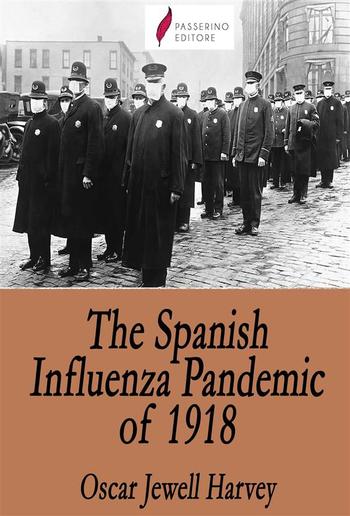
Oscar Jewell Harvey - The Spanish Influenza Pandemic of 1918
The Spanish Influenza Pandemic of 1918
Oscar Jewell Harvey
Description
The Spanish flu, also known as the 1918 influenza pandemic, was an unusually deadly influenza pandemic caused by the H1N1 influenza A virus. Lasting from February 1918 to April 1920, it infected 500 million people – about a third of the world's population at the time – in four successive waves. The death toll is typically estimated to have been somewhere between 20 million and 50 million, although estimates range from a conservative 17 million to a possible high of 100 million, making it one of the deadliest pandemics in human history.
The first observations of illness and mortality were documented in the United States (in Kansas) in March 1918 and then in April in France, Germany and the United Kingdom. To maintain morale, World War I censors minimized these early reports. Newspapers were free to report the epidemic's effects in neutral Spain, such as the grave illness of King Alfonso XIII, and these stories created a false impression of Spain as especially hard hit. This gave rise to the name "Spanish" flu. Historical and epidemiological data are inadequate to identify with certainty the pandemic's geographic origin, with varying views as to its location.

